Imagine stepping into your garden, a place where nature and nurture harmoniously blend, and every plant thrives under your care. Whether you’re just beginning to explore the joys of gardening or you’re a seasoned green thumb, organic gardening promises a bountiful harvest free from harmful chemicals, and it’s kinder to our planet. With a little creativity and resourcefulness, you can cultivate a thriving organic garden without compromising on convenience or effectiveness. Embracing organic methods not only enhances the health of your plants but also enriches the soil, creating an ecosystem that supports biodiversity and sustainability.
In this article, we’re excited to share seven quick organic gardening hacks that will transform your gardening routine, offering practical solutions that are both innovative and easy to implement. You’ll discover tips that can maximize your garden’s potential, from natural pest repellents to homemade fertilizers that boost plant growth. These hacks are designed to empower you, whether you’re nurturing a small balcony garden or managing a sprawling backyard haven. Our aim is to make organic gardening feel achievable and rewarding, regardless of your level of experience.
The beauty of organic gardening lies in its simplicity and the profound connection it fosters between you and the natural world. By adopting these hacks, you’ll be equipped to make your garden more resilient and productive, enhancing your enjoyment and success as a gardener. We understand that every garden is unique, and so our suggestions are flexible, allowing you to adapt them to suit your particular space and needs. So, let’s dig in and uncover the secrets to cultivating a vibrant, chemical-free garden that flourishes under your care.
Compost Kitchen Scraps Regularly
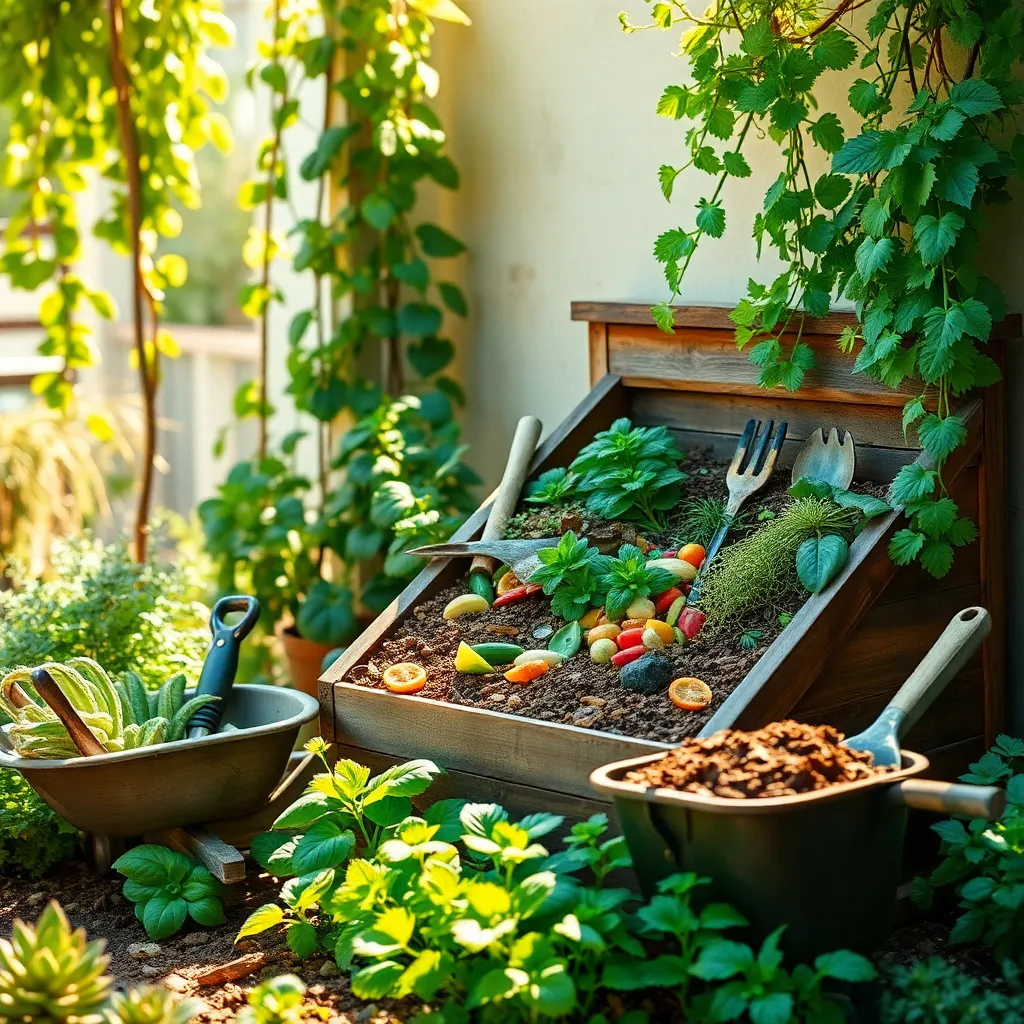
Composting kitchen scraps is a simple way to enrich your garden soil with nutrients. Begin by collecting items like vegetable peels, coffee grounds, and eggshells, which are rich in organic matter.
To start, choose a dedicated compost bin or area in your garden that is easily accessible. Ensure the pile is aerated by turning it regularly, which will speed up the decomposition process.
Adding a mix of “green” and “brown” materials is essential for a balanced compost. Greens, such as fruit scraps and grass clippings, provide nitrogen, while browns like dried leaves and newspaper add carbon.
For gardeners with limited space, consider using a worm bin to compost indoors. Worms can efficiently break down organic waste, producing rich compost that can be used to boost plant health and growth.
Plant Companion Herbs Strategically
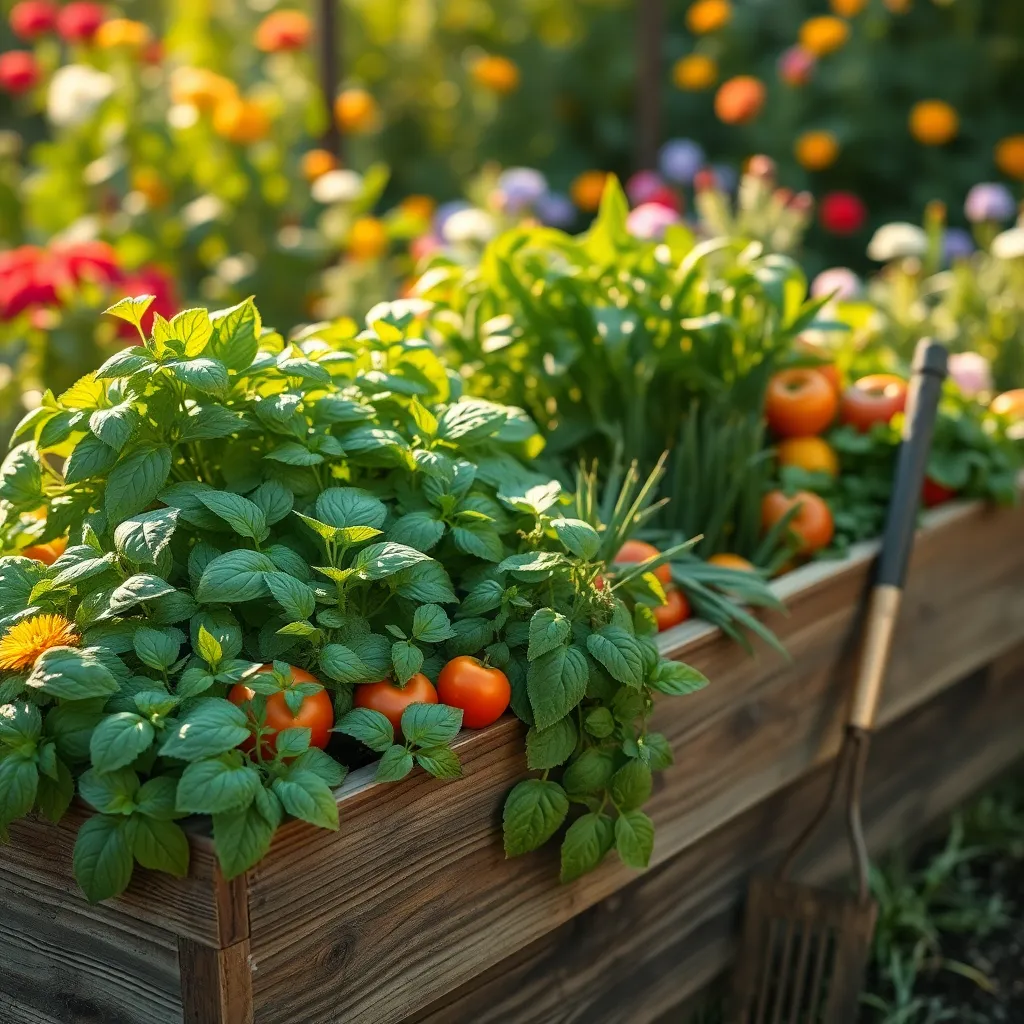
Companion planting is a great way to maximize the health and productivity of your garden. By strategically planting herbs alongside vegetables, you can naturally deter pests and improve flavor profiles.
For instance, planting basil near tomatoes can enhance their growth and flavor. Basil not only repels common garden pests like aphids and whiteflies but also attracts beneficial pollinators.
Consider using marigolds as a companion plant for most herbs and vegetables. These vibrant flowers are known to deter nematodes and certain beetles, keeping your garden thriving organically.
To get the most out of companion planting, be mindful of soil conditions and space requirements. Herbs like thyme and rosemary prefer well-drained soils, so ensure you use a sandy or loamy mix to prevent waterlogging.
Watering needs also vary, so it’s important to group plants with similar moisture requirements together. For example, sage and oregano thrive with less frequent watering, making them ideal companions in a drier garden spot.
Advanced gardeners can experiment with succession planting to continuously optimize space and harvests. By timing your herb plantings strategically, you’ll maintain a lush and productive garden throughout the growing season.
Rotate Crops Seasonally

Rotating crops seasonally is a powerful strategy to maintain soil health and prevent pest buildup. By changing the location of your plants each year, you disrupt the life cycles of pests specific to certain plants, reducing the chance of infestations.
Begin by categorizing your crops into families, such as nightshades, legumes, and brassicas. Each season, plant a different family in a given plot to ensure that the soil is not depleted of the same nutrients repeatedly.
For beginners, start with a simple three-year rotation plan: move nightshades like tomatoes and peppers, follow them with legumes like beans to enrich the soil, and finish with root vegetables like carrots. This method not only keeps your soil fertile but also makes the most of varying nutrient requirements.
Advanced gardeners can optimize rotation by considering cover crops, which can be planted during the off-season. Cover crops such as clover or vetch improve soil structure and add organic matter, preparing the plot for the next growing season.
Use Natural Pest Deterrents
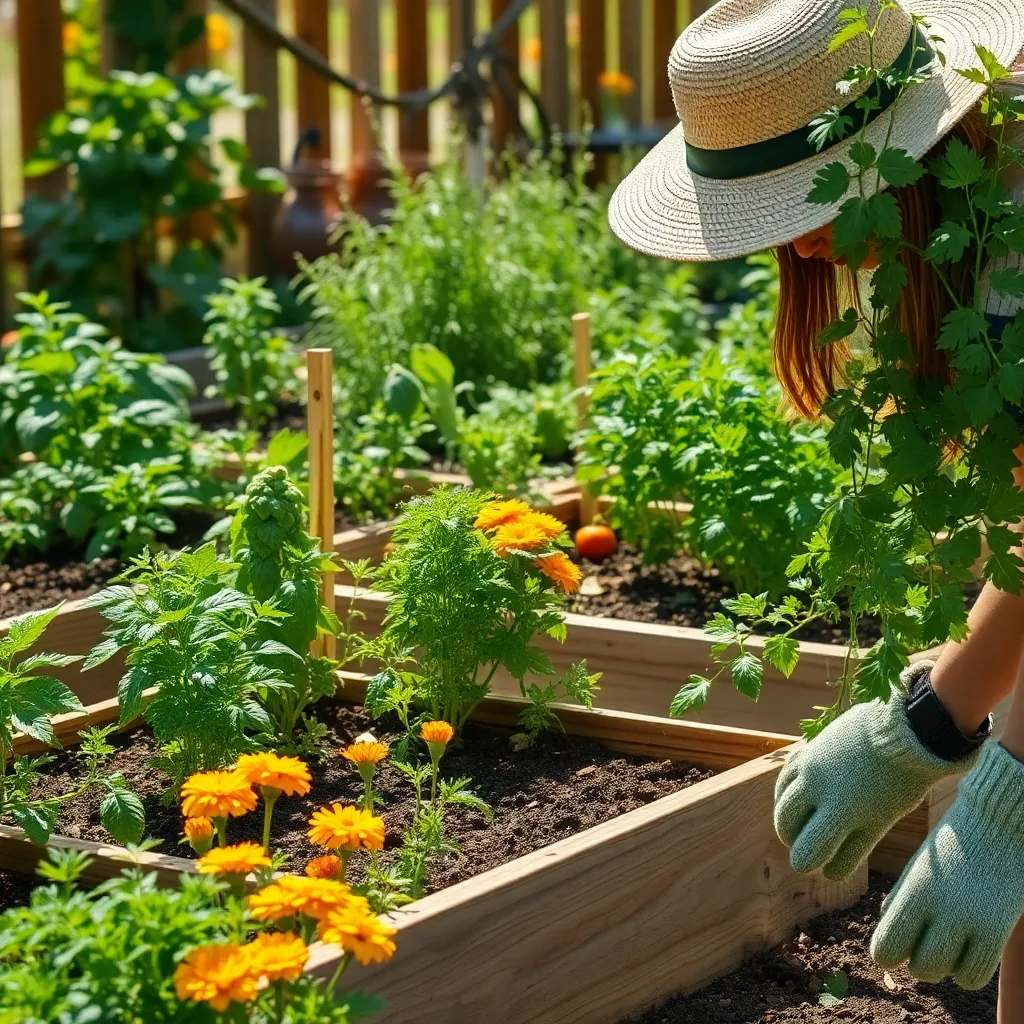
Using natural pest deterrents can be a highly effective way to protect your garden without resorting to chemicals. Companion planting is a well-known technique where certain plants are grown together to naturally repel pests. For instance, marigolds are excellent companions for tomatoes, as they deter nematodes and aphids. Similarly, planting basil near your tomatoes can help ward off whiteflies, mosquitoes, and tomato hornworms.
Another practical method is to create homemade sprays using everyday kitchen ingredients. A simple garlic spray made by blending garlic cloves with water can effectively repel a range of insects, including aphids and beetles. For a more potent solution, mix a few drops of dish soap and chili powder with water for a spray that targets soft-bodied insects. Remember to test any homemade spray on a small leaf area first to ensure it doesn’t damage the plants.
Introducing beneficial insects is a great way to maintain a healthy garden ecosystem naturally. Ladybugs and lacewings are excellent choices as they feed on aphids, mites, and other common pests. Ensure your garden provides a habitat for these beneficial insects by incorporating plants they love, such as dill, fennel, and yarrow. This approach not only controls pest populations but also enhances the biodiversity of your garden.
For more advanced gardeners, using trap crops can be an effective strategy to draw pests away from your main plants. Planting trap crops like mustard or radishes around your valuable crops can attract pests away, allowing you to manage them more effectively. Regularly inspect these trap crops and remove pests manually or dispose of the infested leaves. This technique requires careful observation but can significantly reduce pest pressure on your main crops.
Mulch with Organic Materials
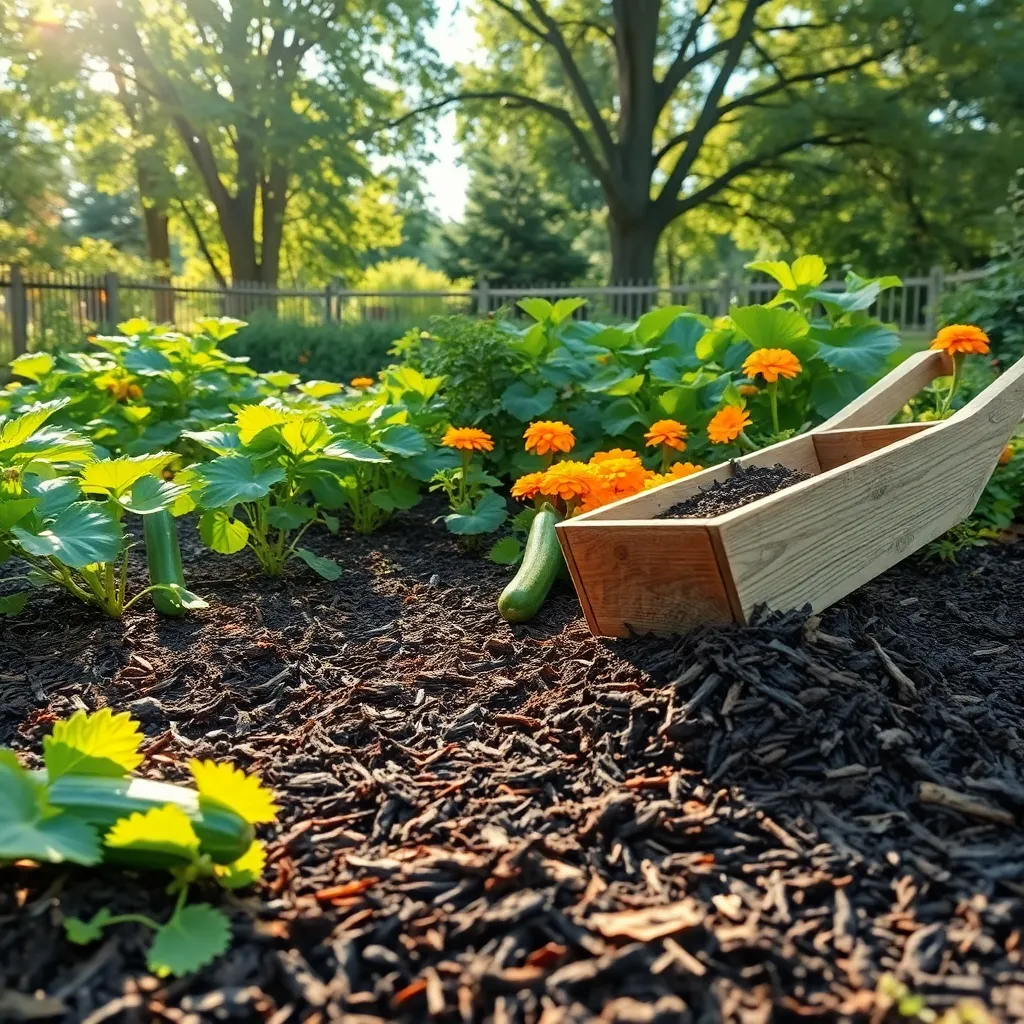
Mulching with organic materials can significantly improve your garden’s health and productivity. By using materials like shredded leaves, straw, or grass clippings, you enhance soil fertility and moisture retention.
Choose organic mulch based on the specific needs of your plants and the climate. For example, straw is excellent for vegetable gardens as it decomposes slowly and allows easy water penetration.
Applying mulch in the spring or fall is ideal, helping to regulate soil temperature and suppress weeds. Spread a layer about 2-3 inches thick around plants, but avoid piling it against stems to prevent rot.
For those seeking advanced techniques, consider using a layer of newspaper or cardboard beneath the mulch. This additional layer can further inhibit weed growth and gradually enrich the soil as it breaks down.
Harvest Rainwater Efficiently
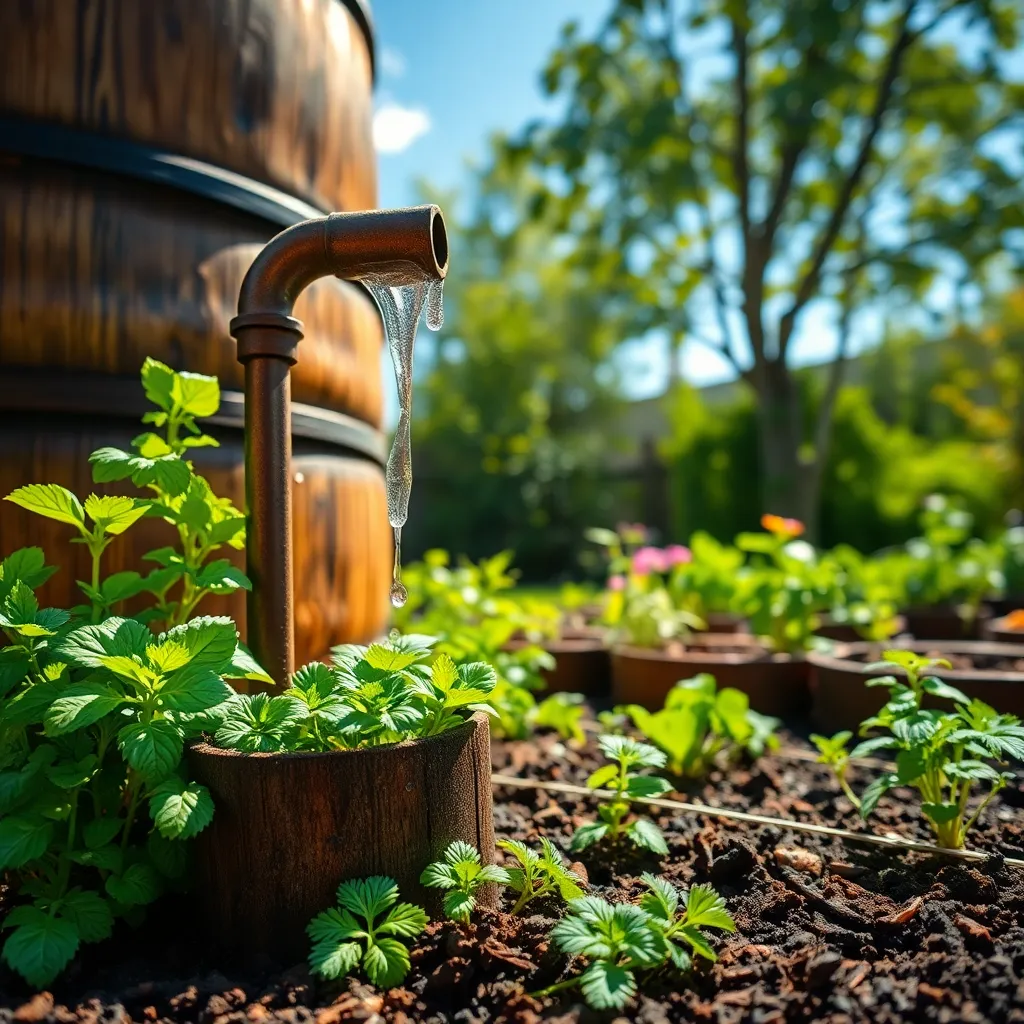
To start harvesting rainwater efficiently, set up a simple system using rain barrels placed under your downspouts. This system collects rainwater from your roof, providing a sustainable, cost-effective water source for your garden.
Ensure your rain barrels are equipped with a secure lid to prevent debris and pests from entering. Adding a spigot near the bottom of the barrel allows for easy access to the stored water.
Position your rain barrels on a raised platform to improve water flow and facilitate gravity-fed watering. Elevating the barrels also helps you connect a hose for direct watering of your garden beds.
For those looking to expand their system, consider linking multiple barrels using a connecting kit. This approach increases your storage capacity, ensuring you have ample water even during dry spells.
Encourage Beneficial Insects Naturally

To naturally encourage beneficial insects in your garden, start by planting a diverse range of flowering plants. Incorporate species like marigolds, yarrow, and dill that attract beneficial pollinators and predators, enhancing your garden’s ecosystem.
Use a mix of native plants to support local insect populations effectively. Native plants are adapted to your climate and soil conditions, making them easier to care for and more enticing to beneficial insects.
Consider providing habitats such as small brush piles or insect hotels to encourage predatory insects. These structures offer shelter and breeding sites, increasing the presence of insects like ladybugs and lacewings that help control pest populations.
Finally, minimize pesticide use to avoid harming the beneficial insects you’re trying to attract. Opt for organic controls or introduce companion planting techniques, such as basil with tomatoes, to naturally manage pest issues while supporting a healthy garden environment.
Conclusion: Growing Success with These Plants
In exploring the fascinating parallels between organic gardening and nurturing relationships, we’ve uncovered seven key concepts: the importance of cultivating patience, nurturing growth through consistent effort, enriching the soil with effective communication, embracing diversity to foster resilience, pruning unnecessary negativity, understanding natural cycles of change, and appreciating the fruits of your labor with gratitude. These principles not only guide us in gardening but also serve as a profound framework for building and sustaining meaningful relationships.
To put these insights into immediate action, consider starting with a simple step: choose one principle to focus on this week, such as enhancing communication or practicing gratitude, and observe the positive shifts it brings to your interactions.
Remember, cultivating a thriving relationship is an ongoing journey, much like tending to a garden. Bookmark this article now so you can revisit these vital hacks whenever you need a reminder or inspiration.
As you embark on this journey, envision a future where your relationships flourish with health and vibrancy. By mindfully applying these organic principles, you’re well on your way to harvesting a lifetime of meaningful connections. Your relationships deserve this nurturing, and you have the tools to make it happen.







